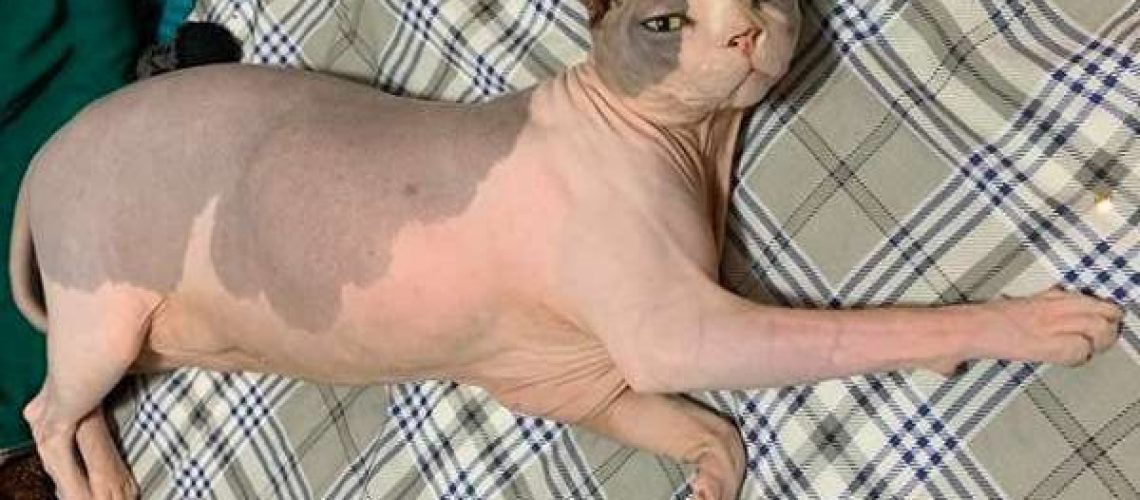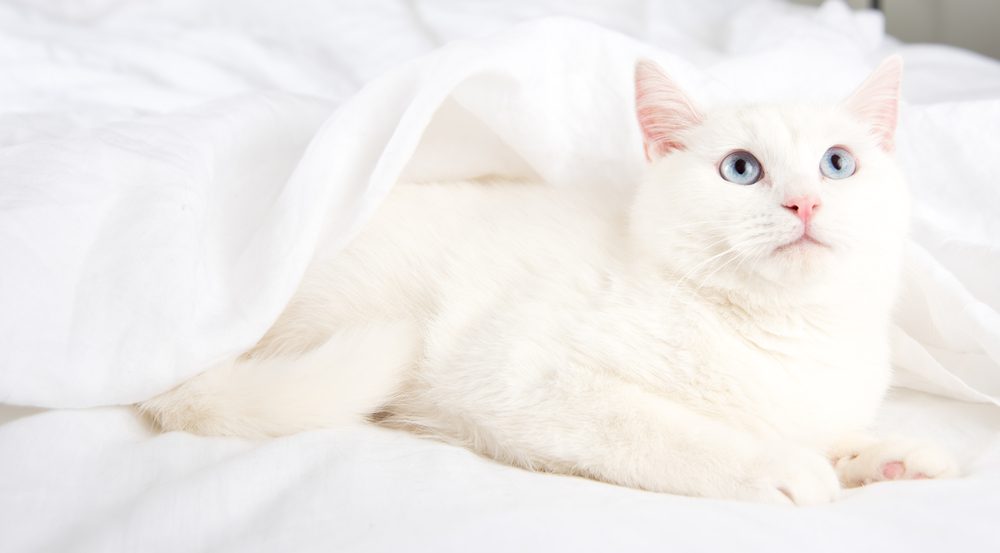Are you curious about Elf Cats? Well, get ready to embark on a journey into the fascinating world of this unique breed. Whether you're already an Elf Cat owner or simply intrigued by these enchanting creatures, delving into the subject of Elf Cat essentials is sure to bring you a wealth of knowledge and benefits. Understanding the ins and outs of caring for an Elf Cat is not only essential for their well-being but also for creating a stronger bond with your feline friend. From their distinctive appearance to their special care requirements, we'll explore everything you need to know about this captivating breed. So, let's dive in and uncover the secrets behind these extraordinary cats!
Key Takeaways:
- Elf cats are a unique and rare breed known for their hairless appearance and curled ears.
- Proper care for an Elf cat includes regular bathing to maintain their skin health and prevent oil buildup.
- These cats require special attention to their ears, as they are prone to ear infections due to their unique ear structure.
- Elf cats have a friendly and sociable nature, making them great companions for families and individuals alike.
- Regular veterinary check-ups are essential for Elf cats to ensure overall health and address any potential genetic or breed-specific issues.
What is an Elf Cat and What Makes it Special?
Understanding the Elf Cat
An Elf Cat is a unique and rare breed of cat that has distinctive physical features. It is known for its hairless or partially hairless body, curled ears, and long legs. The absence of fur makes their skin feel warm to the touch. These cats have a slender and athletic build, which gives them a graceful appearance. They come in various colors and patterns, adding to their beauty.
The Special Qualities of an Elf Cat
What sets the Elf Cat apart from other breeds is its charming personality. These cats are known to be affectionate, social, and playful. They enjoy being around people and are often described as being dog-like in their loyalty towards their owners. Elf Cats are intelligent creatures that can easily adapt to new environments and learn tricks.
Their unique physical features also make them stand out. The curled ears give them a distinct look that many find adorable. Additionally, their lack of fur means they require minimal grooming compared to other cats.
Fun Fact:
- The Elf Cat is a relatively new breed that was developed in the early 2000s by crossing the Sphynx cat with the American Curl breed.
Caring for an Elf Cat: Grooming and Hygiene Tips
Regular Brushing to Maintain a Sleek Coat
One important aspect of caring for an Elf cat is maintaining their unique coat. These cats have a short, fine coat that requires regular brushing to keep it looking sleek and healthy. Using a soft-bristle brush or a grooming glove, gently brush your Elf cat's fur at least once a week to remove any loose hairs and prevent matting. This not only helps keep their coat in top condition but also reduces shedding around the house.
Keeping Their Ears Clean and Free from Infections
Another crucial part of grooming an Elf cat is taking care of their ears. Due to their large ears, Elf cats are more prone to ear infections and wax buildup. To prevent these issues, inspect your cat's ears regularly for any signs of redness, discharge, or foul odor. If you notice any abnormalities, consult your veterinarian for proper treatment. Additionally, gently clean the outer part of their ears using a damp cotton ball or pet-safe ear cleaner on a weekly basis.
Grooming Tips:
- Use a soft-bristle brush or grooming glove for regular brushing sessions.
- Inspect your Elf cat's ears weekly for signs of infection.
- Clean the outer part of their ears with a damp cotton ball or pet-safe ear cleaner.
Dietary Needs of an Elf Cat: What to Feed Them
Providing proper nutrition is essential for keeping your Elf cat healthy and happy. These cats have specific dietary needs that should be met through high-quality cat food formulated for active breeds. Look for brands that offer balanced nutrition with real meat as the primary ingredient. Avoid foods with excessive fillers, artificial additives, or by-products.
It's important to feed your Elf cat a diet that is appropriate for their age and activity level. Kittens require more frequent meals and should be fed kitten-specific food until they reach adulthood. Adult Elf cats can be fed twice a day, with portion sizes based on their weight and activity level. Remember to provide fresh water at all times and avoid overfeeding to prevent obesity.
Dietary Tips:
- Choose high-quality cat food formulated for active breeds.
- Look for brands with real meat as the primary ingredient.
- Feed kittens kitten-specific food until they reach adulthood.
- Provide fresh water at all times and avoid overfeeding.
Health Concerns for Elf Cats: Common Medical Conditions
While Elf cats are generally healthy, like any other breed, they may be prone to certain medical conditions. It's essential to be aware of these potential health concerns to ensure early detection and proper treatment if necessary.
Hypertrophic Cardiomyopathy (HCM)
HCM is a heart condition that can affect Elf cats. Regular veterinary check-ups are crucial to monitor their heart health and detect any signs of HCM early on. Symptoms may include difficulty breathing, lethargy, or sudden collapse.
Patellar Luxation
This condition involves the dislocation of the kneecap and can cause lameness or limping in Elf cats. If you notice any abnormal gait or discomfort while walking, consult your veterinarian for an examination.
Common Health Concerns:
- Hypertrophic Cardiomyopathy (HCM)
- Patellar Luxation
Living with an Elf Cat: Pets, Children, and Ideal Environment
Elf cats are known for their friendly and social nature, making them great companions for families with children or other pets. However, it's important to introduce them gradually and supervise interactions to ensure everyone's safety and well-being.
An ideal environment for an Elf cat includes plenty of vertical spaces such as cat trees or shelves for climbing and perching. They also appreciate interactive toys and scratching posts to keep them mentally stimulated and physically active. Providing a quiet space where they can retreat when needed is also beneficial.
Tips for Living with an Elf Cat:
- Introduce Elf cats gradually to children or other pets.
- Supervise interactions to ensure safety.
- Provide vertical spaces, interactive toys, and scratching posts.
- Create a quiet space for your Elf cat to retreat when needed.
Keeping Your Elf Cat Active and Happy: Exercise and Mental Stimulation
To keep your Elf cat active and happy, regular exercise and mental stimulation are essential. These cats have high energy levels and enjoy interactive playtime with their owners. Engage in daily play sessions using toys that encourage chasing, pouncing, or hunting behaviors.
In addition to physical exercise, provide mental stimulation through puzzle toys or treat-dispensing toys that require problem-solving skills. This helps prevent boredom and keeps their minds sharp. Consider setting up a designated play area with various toys and activities to keep your Elf cat entertained.
Tips for Keeping Your Elf Cat Active:
- Engage in daily play sessions with interactive toys.
- Provide mental stimulation through puzzle toys or treat-dispensing toys.
- Create a designated play area with various toys and activities.
Training an Elf Cat and Building a Strong Bond with Them
Training an Elf cat can be a rewarding experience that strengthens the bond between you and your feline companion. These cats are intelligent and can learn various commands and tricks with positive reinforcement training methods.
Start by teaching basic commands such as "sit" or "come" using treats as rewards. Be patient and consistent in your training sessions, keeping them short to maintain their interest. Use clicker training or verbal cues to communicate with your Elf cat effectively. Remember to always reward good behavior and avoid punishment, as it can lead to fear or aggression.
Tips for Training an Elf Cat:
- Use positive reinforcement training methods.
- Teach basic commands using treats as rewards.
- Keep training sessions short and consistent.
- Use clicker training or verbal cues for effective communication.
In conclusion, Elf cats are a unique breed known for their curled ears and hairless bodies. Taking care of an Elf cat involves providing them with regular grooming, love, and attention to keep them healthy and happy.
How do you take care of an elf cat?
Despite lacking fur, elf cats need regular bathing and wiping to maintain cleanliness and remove secretions from their skin. Failure to groom them can result in a sticky texture or skin problems for the cat.
What is the lifespan of an elf cat?
The elf cat is a sturdy and robust feline breed that typically lives up to 15 years and is not prone to genetic or hereditary ailments. This information was last updated on May 27, 2022.
Are elf cats friendly?
The Elf cat is known for its friendly and patient nature, as well as its unique personality. It enjoys spending time with its human family and provides entertainment through its lively and intelligent exploration of its environment. Like other hairless cats, the Elf craves attention and is highly playful, often engaging in climbing activities.
Can I touch my elf pet?
Absolutely! Elf Pets® enjoy being embraced and hugged! They also appreciate being involved in enjoyable activities and playing with their families. To assist Santa in ensuring a successful Christmas each year, it is crucial to frequently hold and show affection to your Elf Pets®.
Do elf cats have hair?
The typical Elf cat may look like a hairless cat, but it actually has a slightly different appearance. Its skin should feel like chamois and may have a very fine layer of down that is difficult to see or feel. However, there is short, soft, fine hair allowed on the ears, muzzle, tail, feet, and scrotum.
Can cats touch the elf?
While it is preferred that pets do not touch Elfie, it won't affect his magic. Elfie and Santa are aware that cats and dogs have their own instincts, so if your dog happens to play with Elfie, there's no need to worry. Simply use tongs to separate your pet from the elf.

















